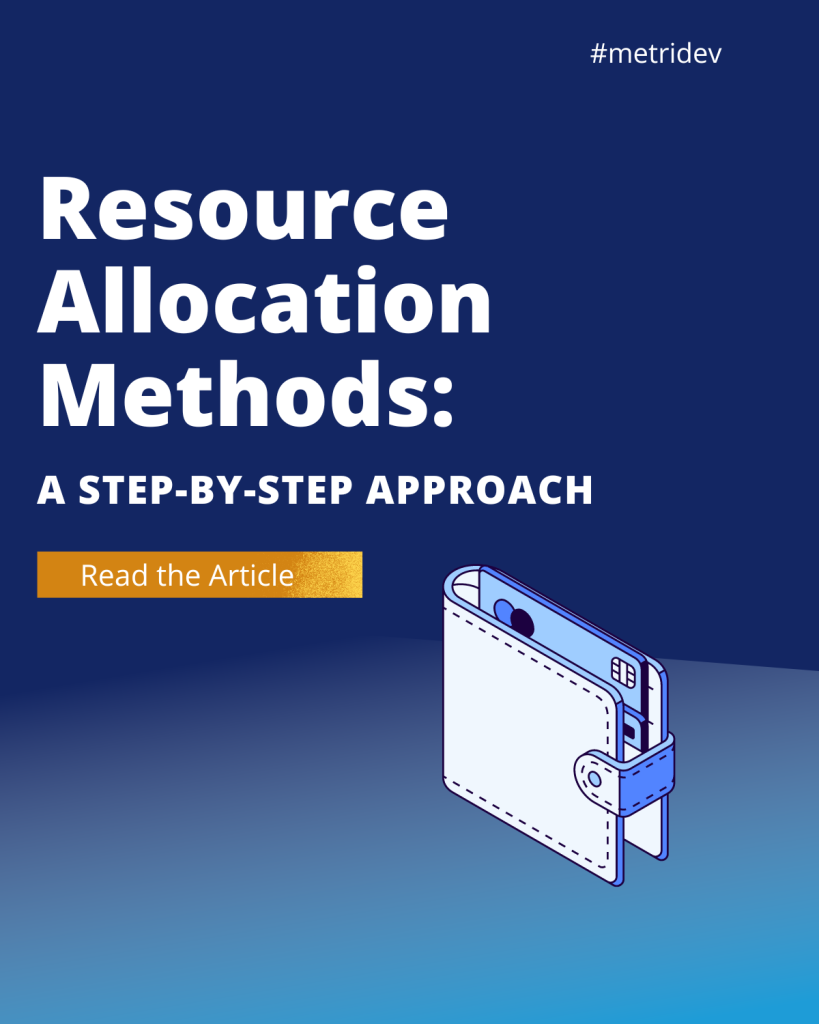Introduction
In today’s technology-driven world, software plays a critical role in the success of many businesses, especially in the tech industry. As software development becomes more complex and expensive, tech companies are increasingly interested in capitalizing their software costs. This guide aims to provide a comprehensive understanding of software capitalization, its rules and regulations, the benefits it offers to tech companies, and strategies for maximizing its potential.
What is Software Capitalization?
Software capitalization entails treating software development costs as an asset rather than an expense on a company’s financial statements. By capitalizing software costs, tech companies can spread the expenses over a period of time, typically the useful life of the software, instead of recognizing them immediately as expenses. This accounting treatment enables companies to match the costs with the revenue generated by the software. This will resulte in a more accurate representation of the software’s value and financial performance.
Does Software Need to be Capitalized?
While not mandatory, tech companies highly recommend software capitalization. Capitalizing software costs offers several advantages, such as improved financial reporting, better alignment of costs with revenue recognition, and increased transparency for investors and stakeholders. Furthermore, capitalizing software costs can enhance a company’s ability to secure funding and attract potential investors who value the long-term value of software assets.
Understanding Software Capitalization Rules and Regulations
To properly capitalize software costs, tech companies must adhere to specific rules and regulations set forth by accounting standards, such as the Generally Accepted Accounting Principles (GAAP) or International Financial Reporting Standards (IFRS). These rules outline the criteria that software development costs must meet to be eligible for capitalization. Generally, companies can capitalize costs incurred during the development stage, such as coding, testing, and debugging. Conversely, they typically expense costs related to research, maintenance, and training.
It is crucial for tech companies to familiarize themselves with the specific rules and regulations applicable to their jurisdiction to ensure compliance and accurate financial reporting. Consulting with an experienced accountant or financial advisor can provide valuable guidance in navigating the complexities of software capitalization.
Benefits of Software Capitalization for Tech Companies
Capitalizing software costs offers several benefits for tech companies. Firstly, it allows for better financial reporting by aligning costs with revenue recognition. This enables companies to demonstrate the true value of their software assets over time and accurately assess their financial performance. Additionally, capitalizing software costs can result in improved cash flow management, as expenses are spread out over the useful life of the software, rather than being incurred upfront. This can provide companies with more flexibility in allocating their financial resources.
Furthermore, software capitalization enhances transparency for investors and stakeholders, as it provides a clearer picture of a company’s investment in software development and the potential return on that investment. This can be particularly beneficial when seeking funding or attracting potential investors who recognize the long-term value of software assets. Lastly, capitalizing software costs can also have tax advantages, as companies may be able to claim depreciation or amortization expenses over time, resulting in potential tax savings.
Determining Eligible Software Development Costs
To determine which software development costs are eligible for capitalization, tech companies must follow the specific criteria outlined by accounting standards. Generally, costs incurred during the development stage, such as coding, testing, and debugging, are eligible for capitalization. These costs are directly attributable to the creation of the software and result in the enhancement of its functionality or performance.
On the other hand, companies typically expense costs related to research, maintenance, and training as they are incurred. They consider research costs incurred before the development stage, such as feasibility studies or market research, as part of the research phase and should expense them. Similarly, they regard maintenance and training costs, incurred after the software is ready for use, as ongoing expenses and should also expense them.
Tech companies should maintain accurate records of their software development costs and ensure that they are properly classified and allocated between capitalized and expensed categories. This will help facilitate the capitalization process and ensure compliance with accounting standards.

Software Capitalization vs. Software Expense
Differentiating between software capitalization and software expense is crucial for accurate financial reporting. Software capitalization involves treating software development costs as an asset on the balance sheet, while software expense refers to recognizing these costs as an expense on the income statement.
By capitalizing software costs, companies spread the expenses over time, matching them with the revenue generated by the software. This approach provides a more accurate representation of the software’s value and financial performance. On the other hand, expensing software costs immediately reduces the company’s net income for the period in which the expenses were incurred.
The decision to capitalize software costs depends on various factors, such as financial goals, project size, and accounting standards. Tech companies should carefully consider these factors and consult with accounting professionals to decide on software development costs’ treatment.
Accounting for Software Capitalization
Accounting for software capitalization requires tech companies to follow specific guidelines outlined by accounting standards, such as GAAP or IFRS. Generally, capitalized software costs are recorded as an asset on the balance sheet and amortized over the software’s useful life. Amortization refers to the systematic allocation of the capitalized costs over time, reflecting the consumption of the software’s economic benefits.
Tech companies should establish an appropriate amortization method based on the nature and expected useful life of the software. Common amortization methods include straight-line amortization. It allocates costs evenly over the useful life. Additionally, units-of-production amortization allocates costs based on software usage or output.
Accurate and consistent accounting for software capitalization is essential for reliable financial reporting. Tech companies should maintain proper documentation of their capitalized software costs, including supporting evidence and calculations. Regular reviews and assessments should also be conducted to ensure that the capitalized costs are still recoverable and reflect any changes in the software’s value or performance.
What is Software Capitalization vs. Amortization?
Software capitalization and amortization are closely related concepts in the context of financial reporting. Software capitalization refers to the process of treating software development costs as an asset, while amortization refers to the systematic allocation of those costs over time.
When capitalizing software development costs, companies record them as assets on the balance sheet. They then amortize these costs over the software’s useful life. Subsequently, the income statement recognizes amortization expenses, which reduce the net income for the period. The amortization expense represents the consumption of the software’s economic benefits over time.
The decision to capitalize software costs and the method of amortization depend on various factors, including the company’s financial goals, the nature and size of the software project, and the applicable accounting standards. Accurate and consistent accounting for software capitalization and amortization is crucial for reliable financial reporting and compliance with accounting standards.
Challenges and Considerations in Software Capitalization
Despite the benefits it offers, software capitalization comes with its own set of challenges and considerations for tech companies. One of the primary challenges is determining which software development costs are eligible for capitalization and which should be expensed. The criteria set forth by accounting standards can be complex, requiring careful analysis and judgment.
Additionally, tech companies must ensure that their internal systems and processes are capable of accurately tracking and allocating software development costs. This may involve implementing specialized accounting software or engaging the services of experienced accountants or financial advisors.
Another consideration is the potential impact of software capitalization on a company’s financial ratios and key performance indicators (KPIs). Capitalizing software costs can affect metrics such as net income, return on assets, and debt-to-equity ratio. Tech companies should carefully evaluate the implications of software capitalization on their financial metrics and communicate any changes to stakeholders and investors.
Lastly, tech companies should also consider the potential risk of impairment of their capitalized software assets. Changes in technology, market conditions, or business strategies can render software assets obsolete or less valuable, requiring impairment write-offs. Regular assessments and reviews should be conducted to ensure that the capitalized software costs are still recoverable and reflect the software’s current value and performance.
Strategies for Maximizing Software Capitalization
To maximize the benefits of software capitalization, tech companies can employ several strategies. Firstly, it is essential to establish robust cost tracking and allocation systems to accurately capture and allocate software development costs. This will facilitate the capitalization process and ensure compliance with accounting standards.
Additionally, tech companies can optimize their software development processes to minimize costs and maximize the capitalizable components. This may involve adopting agile methodologies, leveraging reusable code libraries, or implementing efficient quality assurance processes. By streamlining the development process, companies can reduce non-capitalizable costs and increase the proportion of costs eligible for capitalization.
Collaboration between software engineers and finance professionals is also crucial for maximizing software capitalization. Close communication and understanding of the capitalization rules and requirements can help engineers align their activities with the capitalizable components and provide accurate documentation of their work. This collaboration can result in more effective cost allocation and increased software capitalization.
Lastly, regular assessments and reviews of capitalized software costs should be conducted to ensure their continued recoverability and reflect any changes in the software’s value or performance. This proactive approach can help tech companies identify potential impairment risks and take appropriate measures to mitigate them.
What is an Example of a Capitalized Software?
A tech company develops a custom-built enterprise resource planning (ERP) system to manage its internal operations, capitalizing costs like coding, testing, and debugging as software development costs.
The company records these capitalized software costs as assets on the balance sheet, amortizing them over the ERP system’s useful life. Subsequently, the income statement recognizes amortization expenses, decreasing the net income for the period.
The capitalized ERP system is a valuable software asset for the tech company. It provides significant operational efficiencies, enhancing its competitive advantage. By capitalizing the software costs, the company accurately reflects the value of the ERP system on its financial statements. Additionally, it aligns the costs with the revenue generated by the system, facilitating better financial management. This approach ensures a more accurate representation of the company’s financial position and performance.
The Role of Software Engineers in Software Capitalization
Software engineers play a vital role in software capitalization. Their expertise and activities contribute directly to the creation and enhancement of software assets. This way they become essential in determining which costs are eligible for capitalization.
Software engineers benefit from collaborating closely with finance professionals. They gain insights into the rules and requirements of software capitalization, aligning their activities accordingly. Accurate documentation and providing supporting evidence are crucial tasks for software engineers. These actions help ensure that capitalizable components are properly identified and allocated within the project.
Furthermore, software engineers can optimize their development processes to maximize the capitalizable components and minimize non-capitalizable costs. Adopting efficient coding practices, leveraging reusable code libraries, and implementing effective quality assurance processes can increase the proportion of costs eligible for capitalization.
By actively participating in the software capitalization process, software engineers can contribute to the accurate financial reporting of their companies and enhance the long-term value of software assets.
What is Human Capital Management Software?
Human Capital Management (HCM) software falls under a category of software solutions. It’s specifically designed to streamline and automate various human resource management tasks. These tasks include employee onboarding, performance management, time and attendance tracking, payroll processing, and talent acquisition. HCM software encompasses a wide range of functionalities to meet diverse HR needs.
HCM software enables tech companies to efficiently manage their workforce, optimize HR processes, and enhance employee engagement and productivity. By automating administrative tasks and providing self-service capabilities, HCM software frees up HR professionals’ time to focus on strategic initiatives and employee development.
Conclusion and Key Takeaways
Software capitalization proves invaluable for tech companies, providing numerous benefits. These include improved financial reporting, better alignment of costs with revenue recognition, and increased transparency for investors and stakeholders. To maximize the benefits of software capitalization, it’s essential for tech companies to understand the rules and regulations governing it. Accurately determining eligible software development costs is crucial in this regard. Additionally, employing effective strategies further enhances the advantages of software capitalization, ensuring optimal utilization of resources and financial management.
By collaborating closely with finance professionals, software engineers can play a crucial role in software capitalization by accurately documenting their work and optimizing their development processes. Additionally, the use of HCM software can streamline human resource management and enhance employee engagement and productivity.
In conclusion, software capitalization goes beyond being merely a financial practice; it’s also a strategic endeavor that can significantly enhance a tech company’s long-term success. By adhering to the guidelines outlined in this guide, tech companies can effectively navigate the complexities associated with software capitalization.
IT METRICS TO BECOME AN EXPERT















Leave a Reply